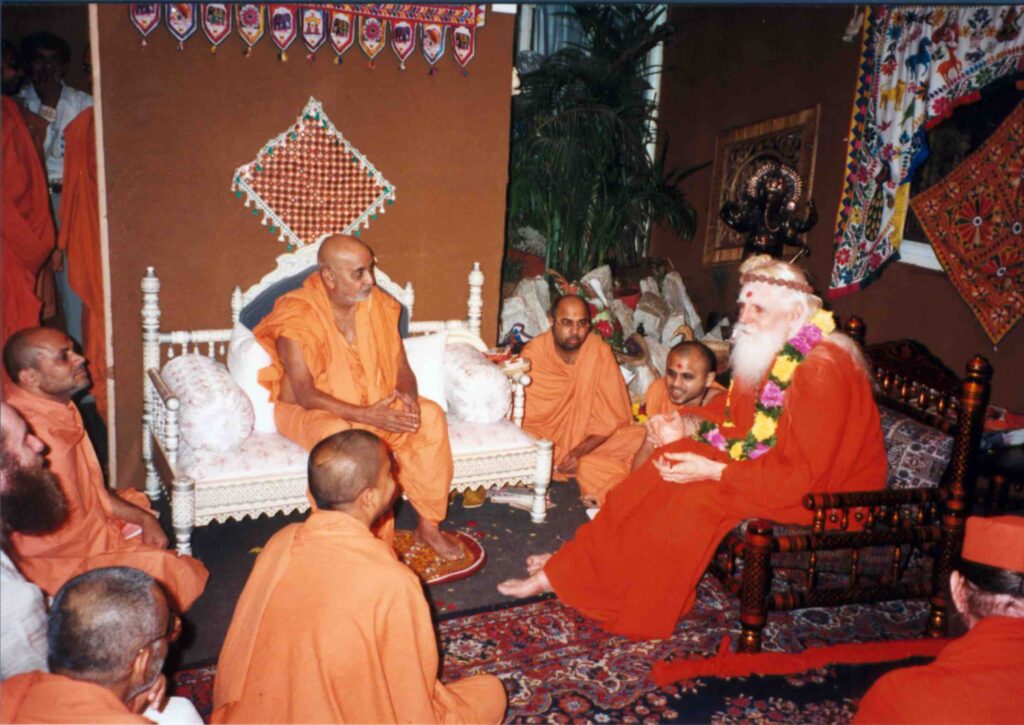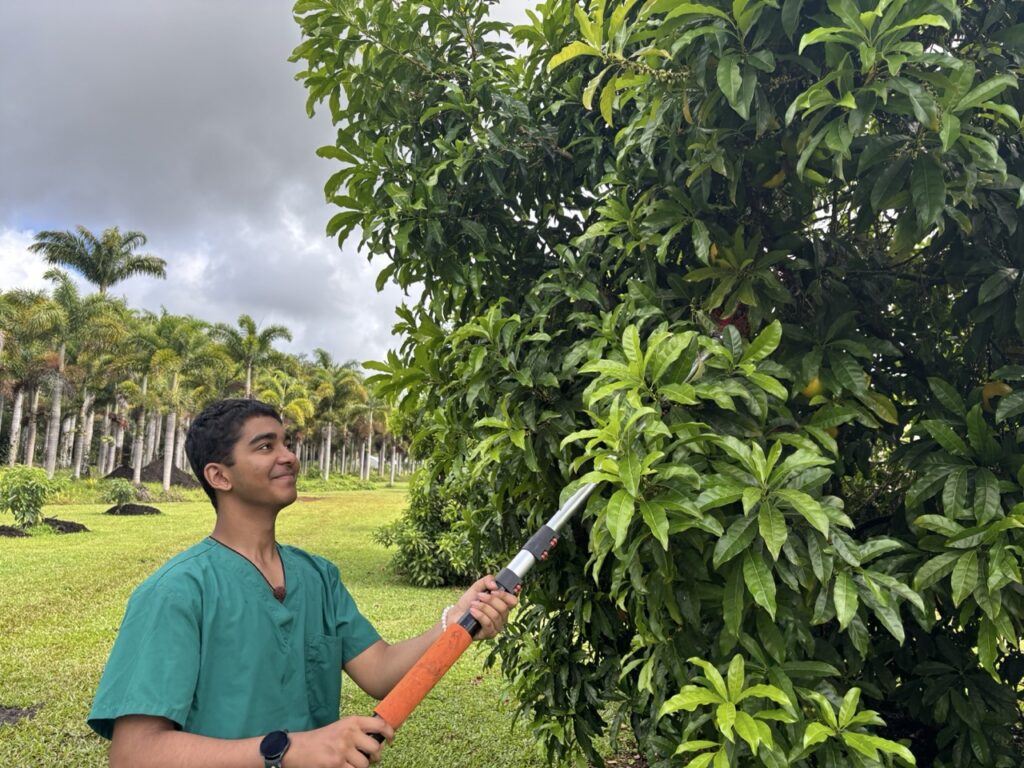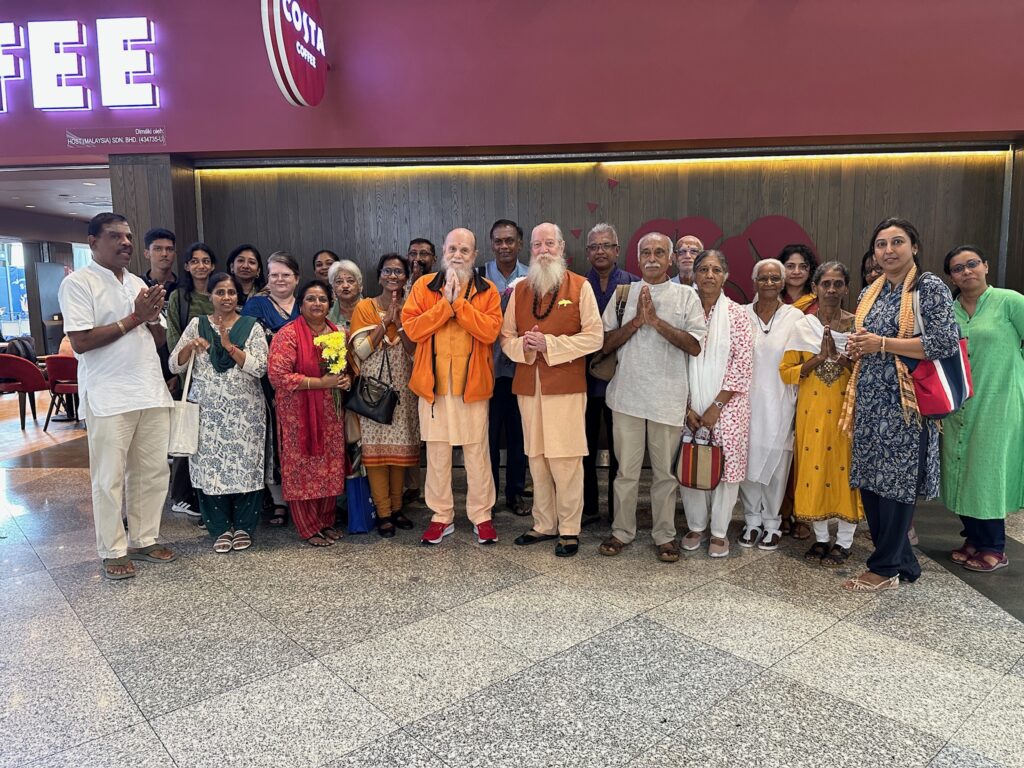Swaminarayan Monks Visit the Aadheenam
Let us return to 1995. Gurudeva is traveling around India with Sadasivanathaswami and Arumuganathaswami, and is invited to attend the 75th Jayanthi of Pramukh Swami Maharaj, the head of the BAPS Swaminarayan Fellowship. It is held in Mumbai where one evening Gurudeva gave a stirring talk to 50,000 devotees, telling them all, “Obey your guru. Obey your guru. Obey your guru.” Those words still resonate today inside the 1200-strong swami order. In the first photo Gurudeva and Pramukh Swami meet afterwards. There is a young monk present, seated in the center listening to Gurudeva. He is today one of the senior most members of the 10 million strong BAPS group, based in Gujarat. It was this young monk who visited a few days back with three of his brother monks. His name: Brahmaviharidas Swami. Hw was traveling with Prieshmunidas Swami, Atmavatsaldas Swami and Shukmunidas Swami.
Swami has wanted to come to Kauai Aadheenam for decades, but has been kept busy building the first Hindu temple in a Muslim nation, a $100 million masterpiece now sitting in Abu Dhabi. Swami, who single-handedly guided the complex Abu Dhabi project, was finally free to come. It was a great meeting of minds and hearts. The BAPS monks and support team were greeted by our swamis at the gate with Sanskrit chants and Hawaiian leis. Brahmaviharidas Swami told those gathered that although Gurudeva’s order is not large, it has impacted their own life and work, both through the magazine and by the Kauai monks’ simple example. He noted that “Size is not a measure of any greatness. It is relevance that matters. And all of you have proven your relevance to the Hindus of the world.”
After a short blessing in Kadavul Temple, a longer-than-usual time was spent in the Guru Pitham talking with Satguru Bodhinatha Veylanswami who received a formal invitation to come to Abu Dhabi and see the amazing temple there. There followed a tour of Iraivan Temple and the grounds. And some “talk story” time in the Media Studio. As Gurudeva loved to say, we and the Swaminarayan monks are “like milk poured into milk.”
Swaminarayan Monks Visit the Aadheenam Read More »






















































